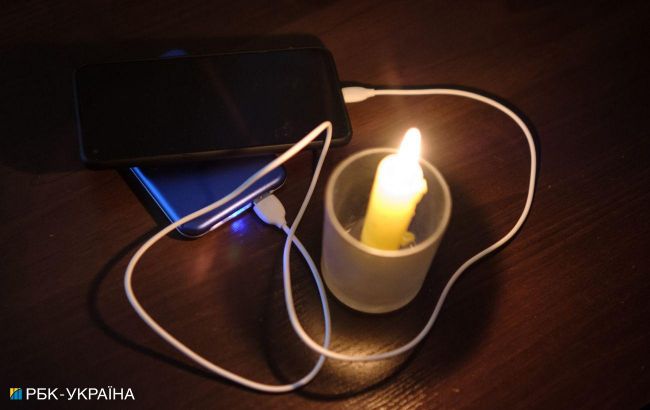Power bank for smartphone, laptop - How to choose
 A power bank will help charge your gadgets during a blackout and while traveling (photo: Vitalii Nosach/RBC-Ukraine)
A power bank will help charge your gadgets during a blackout and while traveling (photo: Vitalii Nosach/RBC-Ukraine)
Having mobile gadgets at hand, it won't hurt to have the ability to charge them. The most convenient way to do this is with a power bank, and its purchase will not be in vain, especially considering possible blackouts.
Capacity
This is one of the main criteria. It is measured in milliampere-hours (mAh). It's simple: the higher the number, the more times you can charge a specific gadget. For example, to fully charge a smartphone with a 4000 mAh battery, you need a power bank with 5000 mAh or more.
Why not a 4000 mAh power bank? The power bank's capacity is specified as nominal, but the actual capacity is always lower due to inevitable energy losses related to energy conversion, different working voltages of devices, and the provision of protection and other power bank functions.
The difference can be up to 40%. So even a 20,000 mAh power bank will charge a 4000 mAh smartphone at best not more than three times. Therefore, when choosing, it's important to take this into account.
To get your bearings, you can consider the following indicators:
- 3000-5000 mAh - suitable for charging a smartphone, headphones, camera, as well as smartwatches and other small gadgets once.
- 5000-10000 mAh - will help charge a smartphone or tablet 1-2 times.
- 10000-20000 mAh - provide multiple charges and allow simultaneous charging of several gadgets.
- 20000 mAh and above - offer even more energy capacity and are recommended for extended trips.
Output power
Each gadget - a smartphone, flashlight, tablet, portable speaker, and so on - has a maximum charging speed. When choosing, you need to make sure that the output power matches your needs. Typically, it is indicated on the device, for example, 5V/1A or 5V/2.4A. The higher the current, the faster the gadget will charge.
Standard USB-A and microUSB connectors provide a current of 2A at 5V, which is a power of 10W. In this case, charging a smartphone will take an hour or longer for the power bank itself. However, such parameters are characteristic of outdated gadgets.
For modern models, a power range of 18 to 25W is considered standard. This is achieved because power banks support higher voltage of 9 or 12V and a current of up to 3A. These working parameters are typical for USB-A and USB-C connectors.
There are even more powerful solutions with 60 or 100W for USB-C output connectors. They guarantee fast charging for smartphones with large batteries (if they support such a feature) and are suitable for those who want to charge a laptop.
Input power
It's indicated on the power bank itself. The higher it is, the faster the power bank charges, assuming that the charger provides the required power.
Connectors
All ports are divided into inputs and outputs. The inputs are used to charge the portable battery itself (indicated with the letters IN), while the outputs are used to charge your devices (OUT). When choosing, it's important to pay more attention to the outputs.
These outputs can vary. Some models have only USB outputs, while others may have USB-C and microUSB, often with multiple outputs. Compatibility with the devices you want to charge depends on these ports.
Some power banks may have a Lightning input port. This means that such a power bank can be charged using an iPhone or iPad charger.
Additional features
Some power banks may have built-in features such as a flashlight, a display indicating the battery level, or support for wireless charging. The latter works if the smartphone supports the corresponding protocol. Typically, this includes the latest iPhone models and flagship devices from other manufacturers.
What you need to know when choosing a power bank for a laptop
In this case, capacity and power indicators may not be sufficient. Due to the high voltage of the laptop's battery, it requires more energy to charge. This means the capacity should be no less than 20,000 mAh, and preferably even more.
The ability to charge a laptop with a power bank depends on its connector. It's simpler with modern models equipped with a USB interface that supports PD (Power Delivery) technology. However, some laptops still come with DC ports, and their connectors may vary in size depending on the manufacturer and model. In this case, you may need to find a special adapter.
However, even if your laptop has a USB-C input, it's not guaranteed to support the Power Delivery standard. If you connect a power bank to it, it may still not charge.
Furthermore, a large capacity and the presence of a USB output do not guarantee laptop charging. You should pay attention to the labels on the power adapter, where the power in watts (W) is indicated. If it's not there, you may find voltage (V) and current (A) ratings, and you can calculate power by multiplying these numbers.
For example, to charge a laptop with a power consumption of 60W, you'll need a power bank that supports an output power of at least this value.

